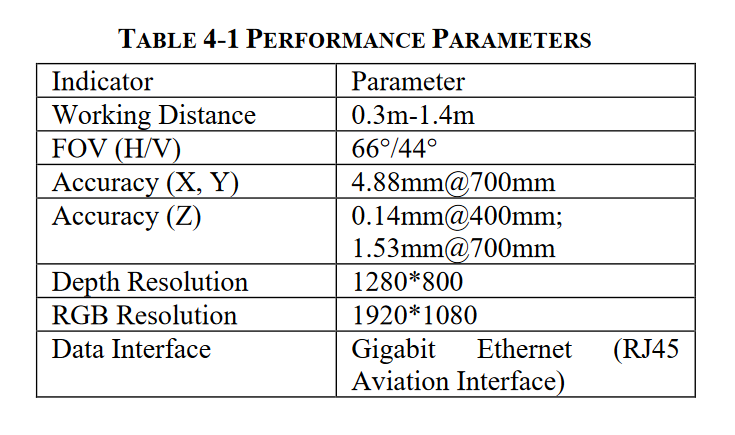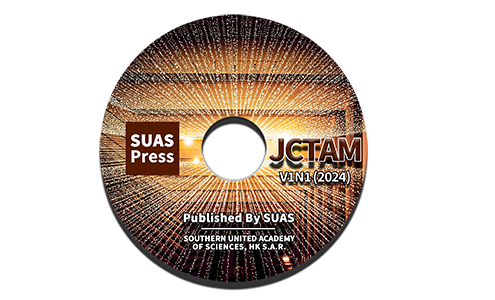AI Machine Vision Automated Defect Detection System
DOI:
https://doi.org/10.5281/zenodo.13763253ARK:
https://n2t.net/ark:/40704/JCTAM.v1n4a01Disciplines:
Computer ScienceSubjects:
Deep LearningReferences:
28Keywords:
Smart Manufacturing, Robotic Arm Grasping, Defect Detection, 2D/3D Vision Fusion, Deep LearningAbstract
With the rapid development of smart manufacturing technologies, automated production has become an important trend in the transformation of the industrial chain. Among various automation applications, robotic arm grasping and visual inspection systems are the most widely used. This paper focuses on unstructured stacking scenarios and workpiece defect detection, and designs two deep learning-based vision systems. In terms of theoretical research, the study focuses on the fundamental knowledge and technical methods related to robotic arm grasping in unstructured environments and workpiece defect detection. To address the issue of grasping randomly stacked objects, a 2D/3D vision-based robotic arm grasping solution is proposed. This solution employs an eye-in-hand configuration, where RGB and depth images are captured by a stereo camera, and a depth feature extraction branch is added to the Mask R-CNN network to improve the accuracy of object detection and segmentation in complex scenes. For object localization, the segmented results are mapped to a 3D point cloud through RGB-D data registration, and the RANSAC and PCA algorithms are used to extract the target plane and bounding box, thereby obtaining the 6D pose information of the target. Combined with the hand-eye calibration results, the robotic arm can accurately grasp the target. Additionally, taking an automotive one-way clutch as an example, an automated defect detection system based on deep learning is designed. Using an industrial camera to capture images, the system utilizes a semantic segmentation network and a defect classification network to detect the number of teeth, copper sleeve, semicircular piece, and chamfer of the one-way clutch, thereby achieving automatic recognition of part defects. This paper integrates 2D image and 3D point cloud information, combined with deep learning methods, to explore robotic arm grasping and workpiece detection, providing new ideas and solutions for the development of smart manufacturing.
References
Wang, D. (Ed.). (2016). Information Science and Electronic Engineering: Proceedings of the 3rd International Conference of Electronic Engineering and Information Science (ICEEIS 2016), January 4-5, 2016, Harbin, China. CRC Press.
Wang, C., Chen, J., Xie, Z., & Zou, J. (2024). Research on Personalized Teaching Strategies Selection based on Deep Learning.
Wang, C., Chen, J., Xie, Z., & Zou, J. (2024). Research on Education Big Data for Students Academic Performance Analysis based on Machine Learning. arXiv preprint arXiv:2407.16907.
Chen, Y., Yan, S., Liu, S., Li, Y., & Xiao, Y. (2024, August). EmotionQueen: A Benchmark for Evaluating Empathy of Large Language Models. In Findings of the Association for Computational Linguistics ACL 2024 (pp. 2149-2176).
Li, S., Lin, R., & Pei, S. (2024). Multi-modal preference alignment remedies regression of visual instruction tuning on language model. arXiv preprint arXiv:2402.10884.
Li, S., & Tajbakhsh, N. (2023). Scigraphqa: A large-scale synthetic multi-turn question-answering dataset for scientific graphs. arXiv preprint arXiv:2308.03349.
Yang, J., Qin, H., Por, L. Y., Shaikh, Z. A., Alfarraj, O., Tolba, A., ... & Thwin, M. (2024). Optimizing diabetic retinopathy detection with inception-V4 and dynamic version of snow leopard optimization algorithm. Biomedical Signal Processing and Control, 96, 106501.
Zhang, Y., Qu, T., Yao, T., Gong, Y., & Bian, X. (2024). Research on the application of BIM technology in intelligent building technology. Applied and Computational Engineering, 61, 29-34.
Liu, H., Xie, R., Qin, H., & Li, Y. (2024). Research on Dangerous Flight Weather Prediction based on Machine Learning. arXiv preprint arXiv:2406.12298.
Liu, H., Shen, F., Qin, H., & Gao, F. (2024). Research on Flight Accidents Prediction based Back Propagation Neural Network. arXiv preprint arXiv:2406.13954.
Zhang, X., Xu, L., Li, N., & Zou, J. (2024). Research on Credit Risk Assessment Optimization based on Machine Learning.
Huang, D., Xu, L., Tao, W., & Li, Y. (2024). Research on Genome Data Recognition and Analysis based on Louvain Algorithm.
Huang, D., Liu, Z., & Li, Y. (2024). Research on Tumors Segmentation based on Image Enhancement Method. arXiv preprint arXiv:2406.05170.
Liu, H., Li, I., Liang, Y., Sun, D., Yang, Y., & Yang, H. (2024). Research on Deep Learning Model of Feature Extraction Based on Convolutional Neural Network. ArXiv, abs/2406.08837.
https://doi.org/10.5281/zenodo.11124440
Hao Qin, & Li, Z. (2024). Precision in Practice: Enhancing Healthcare with Domain-Specific Language Models. Applied Science and Engineering Journal for Advanced Research, 3(4), 28–33. https://doi.org/10.5281/zenodo.13253336
Lai, S., Feng, N., Sui, H., Ma, Z., Wang, H., Song, Z., ... & Yue, Y. (2024). FTS: A Framework to Find a Faithful TimeSieve. arXiv preprint arXiv:2405.19647.
Li, B., Zhang, X., Wang, X. A., Yong, S., Zhang, J., & Huang, J. (2019, April). A Feature Extraction Method for Daily-periodic Time Series Based on AETA Electromagnetic Disturbance Data. In Proceedings of the 2019 4th International Conference on Mathematics and Artificial Intelligence (pp. 215-219).
Tao, Y., Jia, Y., Wang, N., & Wang, H. (2019, July). The fact: Taming latent factor models for explainability with factorization trees. In Proceedings of the 42nd international ACM SIGIR conference on research and development in information retrieval (pp. 295-304).
Li, B., Jiang, G., Li, N., & Song, C. (2024). Research on Large-scale Structured and Unstructured Data Processing based on Large Language Model.
Li, B., Zhang, K., Sun, Y., & Zou, J. (2024). Research on Travel Route Planning Optimization based on Large Language Model.
Tao, Y. (2023, August). Meta Learning Enabled Adversarial Defense. In 2023 IEEE International Conference on Sensors, Electronics and Computer Engineering (ICSECE) (pp. 1326-1330). IEEE. Chicago
Liu, M., Jin, Y., Lu, Y., Chen, M., Hou, B., Chen, W., ... & Yu, X. (2016). A wellbore stability model for a deviated well in a transversely isotropic formation considering poroelastic effects. Rock Mechanics and Rock Engineering, 49, 3671-3686.
Tao, Y. (2023, October). SQBA: sequential query-based blackbox attack. In Fifth International Conference on Artificial Intelligence and Computer Science (AICS 2023) (Vol. 12803, pp. 721-729). SPIE.
Hao Qin, & Zhi Li. (2024). A Study on Enhancing Government Efficiency and Public Trust: The Transformative Role of Artificial Intelligence and Large Language Models. International Journal of Engineering and Management Research, 14(3), 57–61. https://doi.org/10.5281/zenodo.12619360
Mo, Y. ., Qin, H., Dong, Y., Zhu, Z., & Li, Z. (2024). Large Language Model (LLM) AI Text Generation Detection based on Transformer Deep Learning Algorithm. International Journal of Engineering and Management Research, 14(2), 154–159.
Wang, H., Li, J., & Li, Z. (2024). AI-Generated Text Detection and Classification Based on BERT Deep Learning Algorithm. arXiv preprint arXiv:2405.16422.
Qu, M. (2024). High Precision Measurement Technology of Geometric Parameters Based on Binocular Stereo Vision Application and Development Prospect of The System in Metrology and Detection. Journal of Computer Technology and Applied Mathematics, 1(3), 23–29. https://doi.org/10.5281/zenodo.13366612

Downloads
Published
How to Cite
Issue
Section
ARK
License
Copyright (c) 2024 The author retains copyright and grants the journal the right of first publication.

This work is licensed under a Creative Commons Attribution 4.0 International License.


















